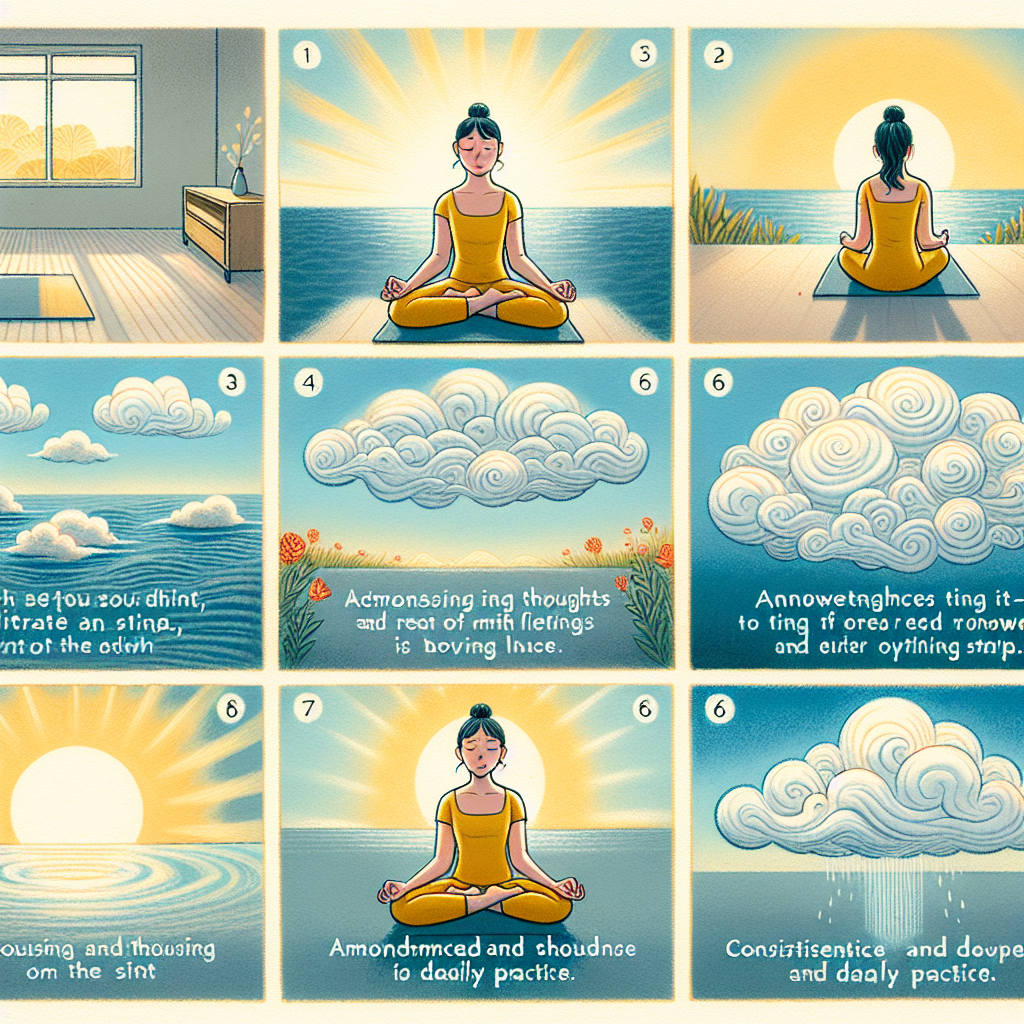
How to go vipassana
Discovering Inner Peace: How to Go Vipassana
Vipassana meditation, an ancient practice that traces its roots back to the teachings of the Buddha, offers a powerful path to self-discovery and inner peace. Many people around the world are taking the plunge into this profound practice, searching for a way to cultivate mindfulness and a deeper understanding of themselves. If you've ever wondered **how to go Vipassana**, you're not alone. In this guide, we'll explore the steps to participating in a Vipassana meditation retreat, what to expect, and how to prepare for this transformative experience.
What is Vipassana Meditation?
Vipassana, which means "clear seeing," is a form of meditation that focuses on self-transformation through self-observation. This practice helps individuals gain insight into the nature of reality and cultivate a deep sense of awareness. Traditionally practiced in a retreat setting, Vipassana meditation encourages participants to observe their thoughts, feelings, and sensations without attachment or aversion.
Benefits of Vipassana Meditation
Participating in a Vipassana retreat can yield numerous benefits, including:
- Increased mindfulness: Enhanced awareness of thoughts and emotions.
- Stress reduction: A calmer mind and improved ability to handle stress.
- Emotional healing: Opportunities for introspection and resolution of buried emotions.
- Improved concentration: Heightened focus and clarity of thought.
- Greater compassion: A deeper connection to oneself and others, fostering empathy.
How to Prepare for Your Vipassana Experience
Before diving into the retreat itself, it's essential to prepare physically, mentally, and emotionally for **how to go Vipassana**. Below are some steps to help you make the most of your experience.
Research Vipassana Centers
Selecting a suitable Vipassana center is a critical first step. Here’s how to go about it:
- Visit the official Vipassana website to find a center near you.
- Read about the schedules, facilities, and accommodations provided by the center.
- Check testimonials and reviews from previous attendees to gauge the atmosphere and effectiveness.
Understand the Rules and Schedule
Vipassana retreats are known for their strict codes of conduct. Familiarize yourself with these rules:
- No talking: Maintain silence throughout the retreat.
- No distractions: Leave your phone and digital devices at home.
- Minimal movement: Remain still during meditation sessions.
- No reading or writing: Avoid external stimuli to cultivate inner focus.
- Adhere to the schedule: Participate in all daily meditation sessions without exception.
Physical and Mental Preparation
The nature of Vipassana meditation can be challenging, especially for beginners. Preparing your body and mind is essential:
- Practice meditation: Try to establish a regular meditation routine in the weeks leading up to the retreat.
- Focus on mindfulness: Incorporate mindfulness exercises into your daily life.
- Maintain good health: Ensure you're physically healthy, as meditation sessions can be long and demanding.
What to Expect During a Vipassana Retreat
Knowing what to expect during your retreat can alleviate anxiety and help you embrace the experience fully. Here’s a breakdown:
Daily Schedule
Vipassana retreats typically follow a rigorous daily schedule designed to maximize meditation practice:
| Time | Activity |
|---|---|
| 4:00 AM | Wake Up |
| 4:30 - 6:30 AM | Group Meditation |
| 6:30 - 8:00 AM | Breakfast & Rest |
| 8:00 - 9:00 AM | Teacher's Discourse |
| 9:00 - 11:00 AM | Group Meditation |
| 11:00 AM - 12:30 PM | Lunch & Rest |
| 12:30 - 1:30 PM | Individual Meditation |
| 1:30 - 3:30 PM | Group Meditation |
| 3:30 - 5:00 PM | Individual Meditation |
| 5:00 - 6:00 PM | Evening Discourse |
| 6:00 - 7:00 PM | Group Meditation |
| 7:00 - 8:30 PM | Individual Meditation |
| 8:30 - 9:30 PM | Question Time |
| 9:30 PM | Lights Out |
Challenges You May Face
Even with preparation, the experience of a Vipassana retreat can be intense. Common challenges include:
- Physical discomfort: Sitting for extended periods can lead to discomfort or pain.
- Emotional turbulence: Long hours of meditation may bring up suppressed emotions.
- Mental distress: It’s common to confront one's thoughts and feelings brutally.
Recognizing these challenges can help prepare you, allowing you to navigate them with compassion and patience.
Post-Retreat Integration
After completing a Vipassana retreat, the real work begins — integrating your insights and experiences into daily life. Here’s how to manage that transition:
Maintain a Regular Meditation Practice
Commit to a daily meditation routine to carry the lessons learned during the retreat into your everyday life. Try to allocate at least 10-20 minutes per day to maintain your practice.
Connect with Community
Consider joining a meditation group or community of practice. Engaging with others can provide support as you integrate your experiences and navigate new challenges.
Stay Mindful
Continually work on applying mindfulness to your daily activities. Whether you're eating, walking, or having a conversation, aim to stay aware and present.
Conclusion
Vipassana meditation presents a unique opportunity for self-discovery, healing, and transformation. If you’re considering **how to go Vipassana**, remember that preparation, understanding the process, and integrating the lessons afterward are key components of a successful experience. Embrace the journey with an open heart and mind, and you may find the rewards far exceed your expectations.
"The goal of Vipassana is to achieve liberation from suffering, allowing you to find peace in the present." - Anonymous
So take a deep breath, set your intentions, and embark on this beautiful journey towards mindfulness and enlightenment. You might just uncover an inner serenity you never knew existed.
By Guest, Published on July 25th, 2024